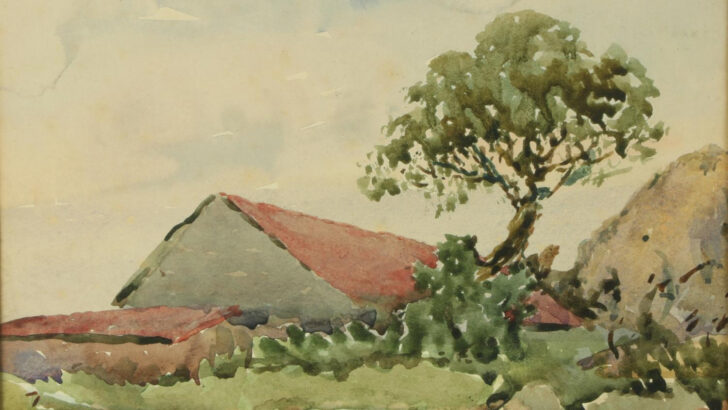The Hidden Ireland
by Daniel Corkery (Wipf and Stock, Eugene, Oregon, $35.00 / €33.50 / £26.00; other editions widely available on line)
This a reissue of a book by an established writer and patriot which was written a century ago, back in 1924, and issued in Dublin by an Irish publisher. It is a cultural landmark from what was the first year of real peace that Ireland had known had since 1912.
On its appearance the Irish News noted presciently that “the brilliant Munsterman has written a book which will probably be regarded as one of the half dozen Irish books published in 1924 which will be remembered in 1939”.
By 1954, it was in its fourth impression, a distinct achievement then for an Irish book. By the time he died in 1964 it was a widely available paperback.
The Hidden Ireland, however, while something of a genuine Irish classic, is still a disputed one. Its aim was to provide a broad overview of the state of poetry in 18th Century Munster and important poets such as Aoghán Ó Rathaille and Brian Merriman, which he believed was unknown to the Anglo-Ireland of the day.
Troubled
It was by a man who was having at the time a troubled passage in his career as a teacher. However, in 1925, perhaps on the basis of this book, he was made an inspector of Irish, a government post.
He had left his position at St Patrick’s College in Cork after a row over promotion. There he had taught a boy who later became the writer Frank O’Connor. At this time he also knew Seán O’Fáolain.
In 1930 he was made Professor of English at University College, Cork, where he had the warm support of Alfred O’Rahilly, the president of the college, who assisted him with the publication of Synge and Anglo-Irish Literature (Cork University Press, 1931).
However as O’Fáolain later pointed out, though he would have been a bright addition to a department in a modern university otherwise fully equipped with teaching staff, but as far as English literature at UCC was concerned, he was all there was. The department hardly flourished under him.
Yet in thinking about Corkery we must recall that at the start of his career he was a literary rather than critical writer. It was as the author of A Munster Twilight and other works published after 1917 that he influenced those young men around him in a Cork moving towards the revolutionary years. This period is vividly described in the revealing memoirs of Frank O’Connor (An Only Child) and Sean O’Faolain (Vive Moi!).
In his last years down to 1954 he devoted himself to the promotion of the Irish language with the all embracing ambition of creating a truly Irish Ireland”
Both Frank O’Connor and Sean O’Faolain have provided living but critical views of a man who so greatly influenced them in their lives and careers; but from whom they had to part if they were to survive as literary artists themselves.
Corkery published more books, but by the 1940s his literary vocation failed, and in his last years down to 1954 he devoted himself to the promotion of the Irish language with the all embracing ambition of creating a truly Irish Ireland.
Synge
The book on Synge is a volume which nowadays will only be of interest to a Synge specialist. It has little to communicate to the ordinary reader about Anglo-Irish literature, and on Synge is too partial to help in an understanding of the playwright.
In the 1960s, however, the book at hand received the critical attention of one of the new school of Irish historians, Louis M. Cullen of TCD, in his critique The Hidden Ireland: A Reassement of a Concept (new edition, Lilliput 1988).
But readers should not neglect Declan Kiberd’s alternate view in Synge and the Irish Language (1979, new edition 1993), which showed Synge to be more a master of Irish than his critics had allowed.
Another view with a more Catholic perspective can be found in the monograph by Patrick Maume, ‘Life that is Exile’: Daniel Corkery and the Search for Irish Ireland (Institute of Irish Studies, 1993).
The Hidden Ireland is a book which every student of Irish culture should have read at least once. Though now seen as less revealing of the 18th Century than it was when it was published, its influence on the thinking of the generation that created the first values of an independent Ireland was immense.
It is less a work of history about a past society, than an outline of a society that might be created given the national will”
Today a more nuanced view of it can be taken, a more distanced view might be taken. Our view, too, of Catholic Gaelic speaking Ireland has evolved.
However, Corkery is still in print, and one imagines that in another century, young Irish citizens of Nigerian or Polish descent will be reading it to try an understand the complicated and contradictory culture of the country of which they will then be a rising part.
It is not a work of genius, but of passionate appeal. It is less a work of history about a past society, than an outline of a society that might be created given the national will.
It was what the Irish poets he attempts to reanimate would have recognised as an aisling, a poet’s visionary experience, but one recounted in prose. And it looks likely that such books, in Irish literary history, often have long lives.


 Peter Costello
Peter Costello The Lonely Tree, a watercolour by Daniel Corkery of the Munster landscape.
The Lonely Tree, a watercolour by Daniel Corkery of the Munster landscape. 